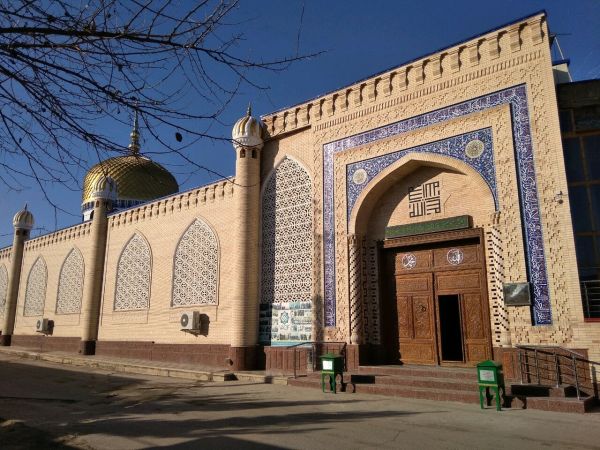Khoja Nisbatdor Mosque
Work on the construction of the Khoja Nisbatdor mosque (Uzbek name: Xo'ja Nisbatdor masjidi) began in the last years of the 19th century and was completed by 1901. The building is located in the muhalla quarter Suzangaron, located in the central part of Samarkand south of the popular Registan Square with a unique historical and architectural ensemble.
The mosque was named after the famous Mufti Khoja Nisbatdor. He is a Muslim theologian who lived earlier than the 15th century, before another renowned and authoritative theologian, the thinker Khoja Akhror. Nisbatdor was known for encouraging merchants and artisans to be honest and fair, not to sin or deceive people.
Khoja Nisbatdor's name translates as "bearer of justice."
History
The building was built on the site where an ancient mosque was previously located. The material used for the construction of the Khoja Nisbatdor Mosque is burnt brick. On the central and right sides of the building is enclosed by the ivan, a vaulted gallery supported by wooden columns, characteristic of Islamic architecture. There is also a khanaka at the mosque, a monastery for dervishes, and a tall minaret has been preserved to this day.
The craftsmen in Uzbekistan were called "usto". Among the usto builders who were engaged in the construction of the Khoja Nisbatdor mosque, only a few names have been preserved: the Gafurov brothers Zainiddin and Shamsiddin, usto Sadullah and usto Mahmud. The work was supervised by architect Abdukadyr Bakiyev, one of the oldest hereditary craftsmen who participated in many restoration works of historical monuments of Samarkand.
During the Soviet period, since 1924, when the activities of religious institutions were banned, a local post office was located within the walls of this Muslim shrine. After the collapse of the USSR and the separation of the Uzbek Republic in 1991, the mosque underwent reconstruction, and in 1998 it reopened its doors to believers. There is an ancient cemetery not far from the Khoja Nisbatdor Mosque.
During 2008-2010, the faithful residents of the city built an updated part of the mosque, decorated with national Uzbek patterns and ornaments, on their own and at their own expense. This building served as a summer prayer hall and covered an area of 400 square meters. However, this new part of the Khoja Nisbatdor Mosque was damaged by fire during a sudden fire in November 2015. According to eyewitnesses, the fire spread to the mosque building from a nearby store. The fire caused great damage to the new building, completely burned out the roof and beautiful patterned columns.
In 2016, the building was restored by the parishioners. Previously, there were no entrance doors, but after the renovation work, three wooden double—leaf doors with double-sided carvings appeared in the mosque - at the entrance to the mosque itself and to the new premises. Restoration assistance was provided both financially and in the form of building materials and free work.
Now the Khoja Nisbatdor mosque is operational, local parishioners come here, many of whom helped in the restoration of the mosque. The building can accommodate about two hundred parishioners at the same time, and about one hundred and fifty more people can be accommodated in the aivan.























